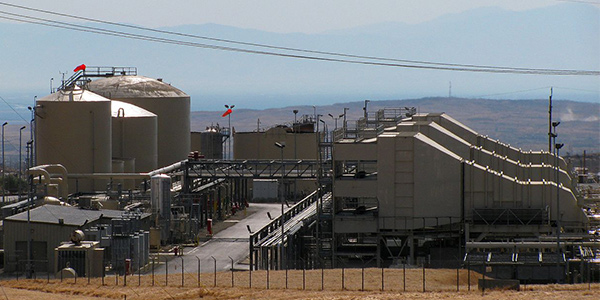CAISO’s Board of Governors voted Thursday to keep a small, older natural gas plant operating to maintain reliability and received a briefing on initiatives to revamp the ISO’s resource adequacy construct.
Both were part of CAISO’s push to prevent energy emergencies next summer like those that struck the state in August and September.
In an unusual request, management asked the board to approve a reliability-must-run (RMR) designation for two units at the Midway Sunset Cogeneration facility, a 250-MW plant built in the late 1980s in a Kern County oilfield.
The units were scheduled to retire at the end of this year. A third unit was already mothballed, but CAISO said the two remaining units may be necessary to help keep the lights on in the world’s fifth largest economy.
The plant can contribute to meeting demand in summer heat waves in the net-peak hours, when California’s solar resources ramp down but demand remains high in the evening. Rolling blackouts in mid-August and close calls over Labor Day weekend occurred during net-peak times. (See CAISO CEO Defends Blackouts Response.)
“The Midway Sunset Cogen is required for the ISO to meet the 2021 systemwide reliability needs due to capacity insufficiency at the net-peak hour during the months July-September 2021,” Neil Millar, vice president of infrastructure and operations planning, wrote in a memo to the board. “Accordingly, the ISO cannot allow the resource to retire or mothball because, absent these units, it faces an inability to meet reliability criteria during these months.”
Stakeholders, including Pacific Gas and Electric, protested the lack of process in the decision and the rush to designate the plant as an RMR resource. Board Chair Angelina Galiteva acknowledged their concerns but said “reliability trumps” all other considerations with just days before the plant’s scheduled shutdown.
Stakeholder Initiatives
On a larger scale, CAISO is prioritizing stakeholder initiatives to promote resource adequacy in 2021 and 2022.
“This is important to ensure we are ready for next summer’s heat events,” Anna McKenna, interim head of market policy and performance, told the board.
Changes in the annual update to the ISO’s three-year policy initiatives roadmap focus on the urgent need to “comprehensively reform resource adequacy requirements” in connection with the shift from fossil fuels to renewables and tightening supply across the West.
They include a redesign of the ISO’s resource adequacy construct, Greg Cook, executive director of market and infrastructure policy, said in his presentation.
The efforts will try to ensure there is sufficient supply to serve net-peak load in heat waves and provide an adequate planning reserve margin, which CAISO wants the California Public Utilities Commission to increase from 15% to 20%.
A new workshop will try to make sure exports do not occur during times of tight supply, as occurred during the August blackouts. And the ISO is seeking to bring new storage resources online by the summer and ensure that imports are backed by specific out-of-state resources.
Many of the issues addressed in CAISO’s slate of initiatives were identified in a preliminary root-cause analysis of the summer blackouts sent to Gov. Gavin Newsom in October. (See CAISO Says Constrained Tx Contributed to Blackouts.)


